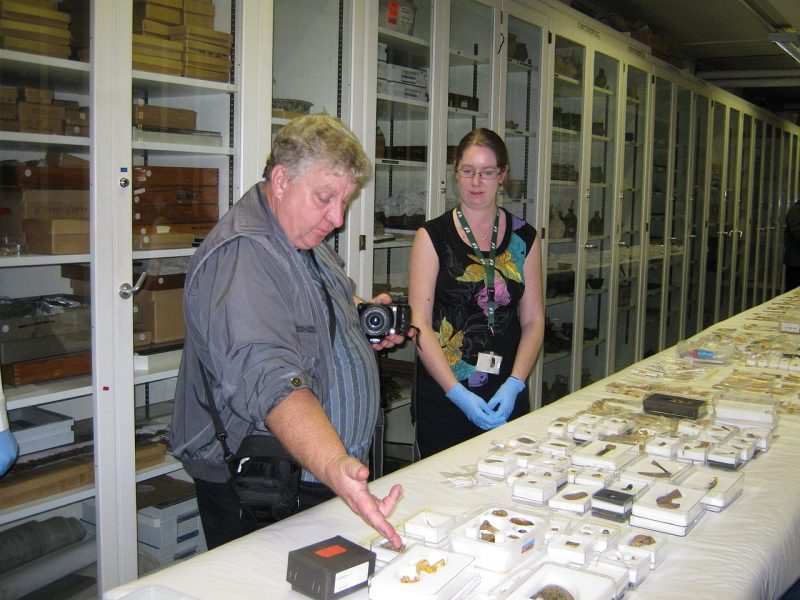Gold artifacts were discovered by Terry Herbert in a field near the village of Hammerwich, near Lichfield, in Staffordshire, England, on 5 July 2009, when he was searching an area of recently ploughed farmland with a metal detector. He discovered over 3,500 items that are nearly all martial in character and contains no objects specific to female uses. The artifacts have tentatively been dated to the 7th or 8th centuries, placing the origin of the items in the time of the Anglo-Saxon kingdom of Mercia.

The Staffordshire Hoard is the largest hoard of Anglo-Saxon gold and silver metalwork yet found. Over the next five days, enough gold objects were recovered from the soil to fill 244 bags. The discovery was publicly announced on 24 September 2009, attracting worldwide attention.

“Absolutely the metalwork equivalent of finding a new Lindisfarne Gospels or Book of Kells“, the hoard has been described by Leslie Webster, former keeper of the department of prehistory at the British Museum. “This is going to alter our perceptions of Anglo-Saxon England as radically, if not more so, than the Sutton Hoo discoveries.”

As of 24 September 2009, 1,381 objects had been recovered, of which 864 have a mass of less than 3 grams (0.096 ozt), 507 less than 1 gram (0.032 ozt), leaving just 10 larger items. In 2010, a team of archaeologists carried out a follow-up excavation on the site and, according to Stephen Dean, a Staffordshire County archaeologist, there is no more gold or treasure to recover from the site.

However, in December 2012, it was announced that 91 additional items of gold and silver metalwork had been found in the field. Many of the pieces are less than 1 gram (0.032 ozt) in weight, but there are some larger pieces, including a cross-shaped mount, an eagle-shaped mount, and a helmet cheek piece that matches one from the 2009 discovery. These additional pieces are believed to be part of the original hoard.

The area of Staffordshire, where the hoard was found was part of the kingdom of Mercia in the 7th and 8th centuries, an era for which contemporary written texts are scant, aside from the writings of Bede, whose Ecclesiastical History, finished in 731, was written from the Christian perspective of a monk in Northumbria; Bede, moreover, appears to have had no contacts in Mercia. Archaeology is called into play to supplement the sparse written sources regarding the missing cultural history.

The site of the discovery, at Johnson’s Farm near Brownhills, is immediately south of Watling Street, and only 2.5 miles (4.0 km) west of the important Roman staging post of Letocetum. Watling Street was a major Roman road that would have seen continued use in the Anglo-Saxon period, and it acted as the demarcation line between the Anglo-Saxon and Danish-ruled parts of England during the 9th century. The hoard has been speculatively connected with king Edwin of Northumbria (d. 632/633).

The hoard was valued at £3.285 million by the Treasure Valuation Committee and Terry Herbert, the finder of the hoard, and Fred Johnson, the farmer on whose land the hoard was found, each received a half share.

It was first displayed at the Birmingham Museum and Art Gallery (from 24 September 2009 until 13 October 2009), and subsequently part of the hoard was put on display at the British Museum (from 3rd November 2009 until 17th of April 2010).